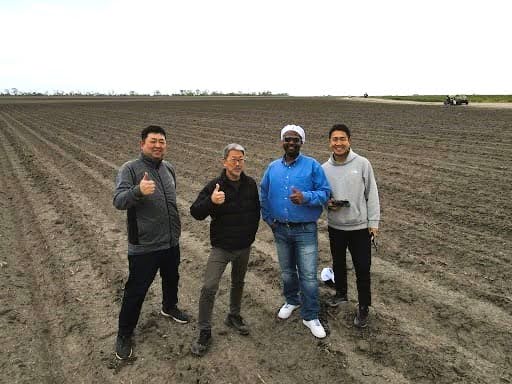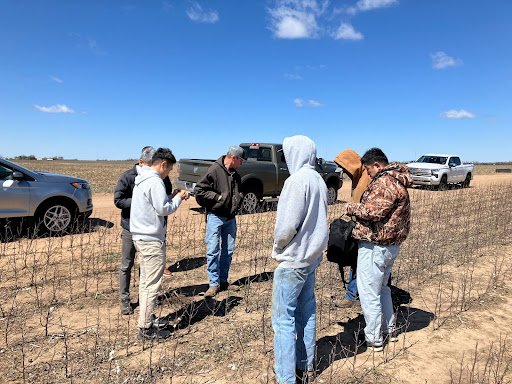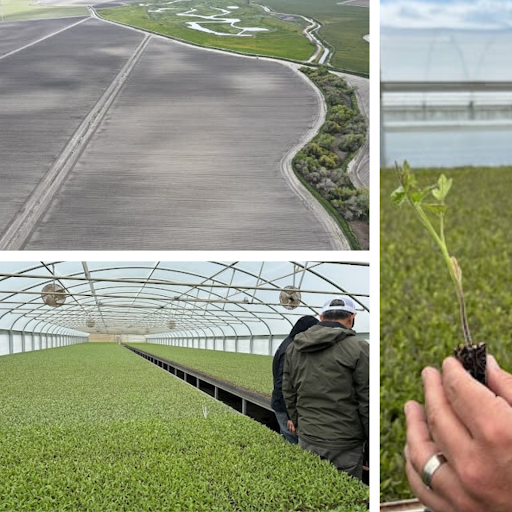[USA Business Trip Report] Field Trials Start with Corn, Soybeans, and Tomatoes

From the end of March to the beginning of April, we went on a business trip to the US Midwest (KS, NE) and CA to conduct test trials with agricultural cooperatives and farmers, who will be our partners for field trials and sales this season.
First, we visited “AgPartners,” an agricultural cooperative in Kansas, to discuss future collaborations. They introduced us to farmers they work with. These farmers cultivate corn, soybeans, and cotton on vast lands of about 10,000 acres and use drones to monitor the growth of their crops.

Checking the soil properties at the soybean trial field in Kansas
Starting in June, field trials using Skeepon will begin in the corn and soybean fields. One objective is to verify the reproducibility of a spraying method that showed good results last year in large corn and soybean fields in the U.S.
We are also conducting trials in “Sandy Soil” fields, which is dry and disadvantageous for crop cultivation. Since there are limits to soil improvement, enhancing the plants’ own strength is necessary and where Skeepon can be useful. We hope to achieve good results.
Next, we visited a tomato farm in California. Here, a field trial on a 60-acre field that started on May 13. The purpose of this visit was to confirm the best way to conduct the trial. We also installed soil moisture sensors to measure moisture levels and ensure consistent results during the trial by comparing treated and untreated sections of Skeepon.

(Upper left) The planned tomato trial field (gray area). The lighter colored soil indicates drier parts. (Lower left) Checking the tomato seedlings for the trial. (Right) Checking the growth of the tomato seedlings to be used in the trial in California.

Acplanta members measuring soil moisture. The area up to the distant trees will be used as the experimental field.
We conducted a promising tomato field trial with this farmer last year, and this time it is considered the main trial. We will check data such as the rate of missing plants in early June and the final results, including yield, in September. We look forward to seeing what results we will achieve.
